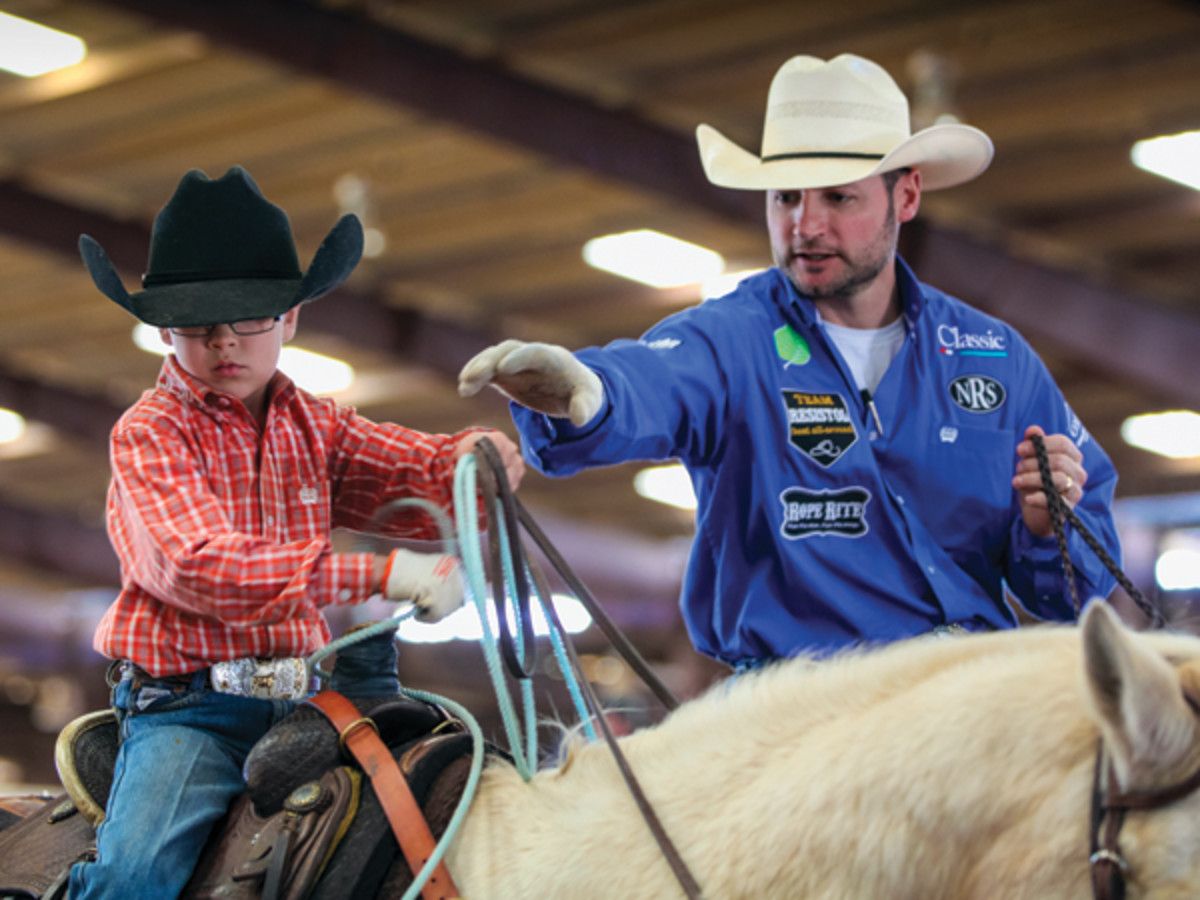
Balance
As far as roping goes, kids need good balance on the ground when roping the dummy to carry that forward into the saddle. Kids will get on a horse and start leaning and forming bad habits right away because they’re so comfortable horseback, so good balance must be established on the ground first. The clinic I’m teaching right now has ropers from 10 to 65 years old, and the first thing we’re working on is making sure their weight is balanced on each foot, that their feet are square underneath them, and that they aren’t leaning one way or another when they’re throwing.
An analogy I always use is that you don’t see a barrel racer come running down the alleyway and lean forward as soon as she gets to the first barrel. They sit back and drive their horses’ hips underneath them into the turn. It took us all a full decade to figure out that Clay O’Brien Cooper was sitting down and riding his horse into his delivery when he threw. That’s what sets the elite like Jade Corkill, Patrick Smith and Paul Eaves apart.
For my students to work on balance horseback, I have them lope five circles around the arena on their horses swinging their ropes. At first, they have trouble keeping their horses in a lope and swinging their ropes at the same time. But as they get tired of struggling with their horses and their ropes, they relax. And they sit back and ride their horses first, just swinging their ropes. It becomes more natural for them.
Square Shoulders
Ropers’ shoulders should be square to their target, either roping the dummy on the ground or roping in the saddle. When heading, their shoulders should be turned to the right, square with the steer’s horns. Heeling, ropers’ shoulders should be pretty much straight on, as the steer is more out in front.
Position in the Swing
So often, when I see people roping the dummy, their left hand is in against their body. Ropers’ left hand should be out in front of them, with a bent elbow like you’re riding your horse. Horsemanship needs to be 80 percent of roping, so even when working on the dummy, ropers have got to remember proper position.
Tip to Target
Ropers’ tips must be toward their target. It’s got to be swinging across the plane of the target, be it the horns or the hocks, going from right to left.
Slow Down the Delivery
Young ropers have got to learn to slow down to open their loop up, with the left hand working with the right hand. When heading, the left hand needs to follow through and go toward the target with the right hand to finish the delivery, preventing the wave off. I hear people say they waved it off because of how they pulled their slack, but that’s not the case. It’s because their left hand didn’t go toward the target with their right hand to help them finish their delivery. The eye of the hondo needs to go to the base of the horns so the curl can go around the left horn. If the eye goes to the withers when you don’t follow through, you’re going to just rope the right horn. When heeling, following through with the left hand helps place the bottom strand on the ground.








